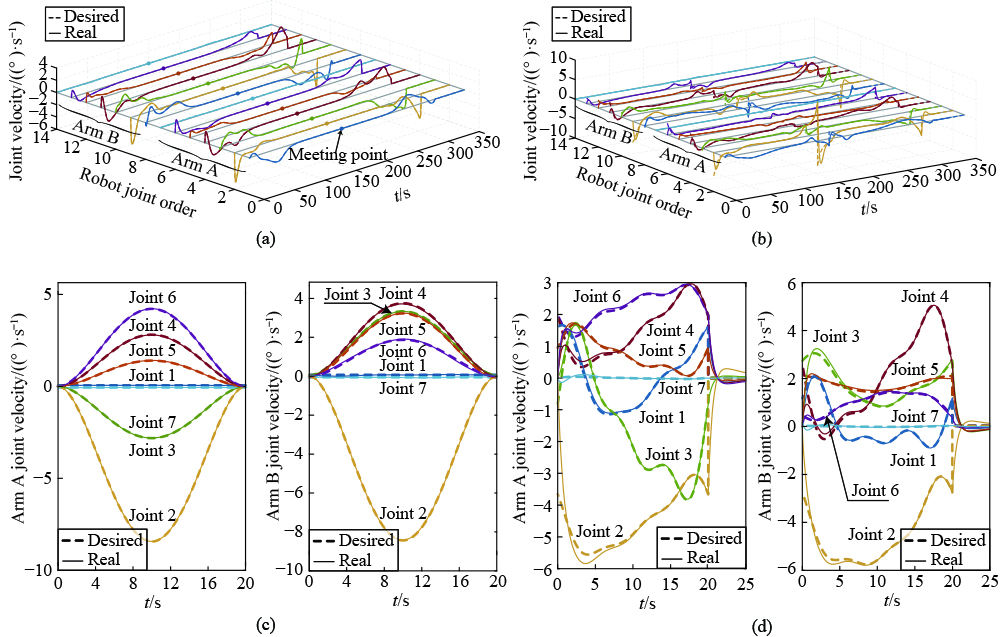In the aforementioned studies, researchers mainly focus on single-arm space robots that are fit for simple tasks. For complex tasks in space, multiarm space robots show better extensibility [
18]. Multiarm space robots can accomplish tasks in more dexterous ways, such as coordinated operation, parallel task, and target clamping [
1]. Studies on multiarm FFSR are also being carried out these years, including capturing tool designs [
19], capturing strategies during coordinate operations [
20], and satellite–manipulator decoupling strategies of free-flying and free-floating robots [
1,
21]. To eliminate base disturbance with the decoupling strategy, the rapidly exploring random trees-based method was applied [
22]. However, this method needs additional DOFs and does not consider end tasks. Abdul Hafez et al. [
1] optimized the satellite base movement of dual-arm robot with the quadratic optimization method. However, the velocity jumps conflict with the real manipulator control. The reactionless null space method was also applied to multiarm space robot to eliminate satellite base attitude disturbance [
2,
23]. However, additional DOFs or manipulators are needed to balance satellite base disturbance. The same problem was also met by Xie et al. [
24], who tried to compensate the base disturbance with balance manipulator. These works mainly pay attention to dual-arm parallel tasks where the robot ends the movement in free space. Scenarios of coordinated operation with dual-arm FFSR are more complicated. Extra constraints are imposed to robot ends in coordinated operation, and the available DOFs are further reduced. As a result, more challenges are encountered for satellite base disturbance minimization.













